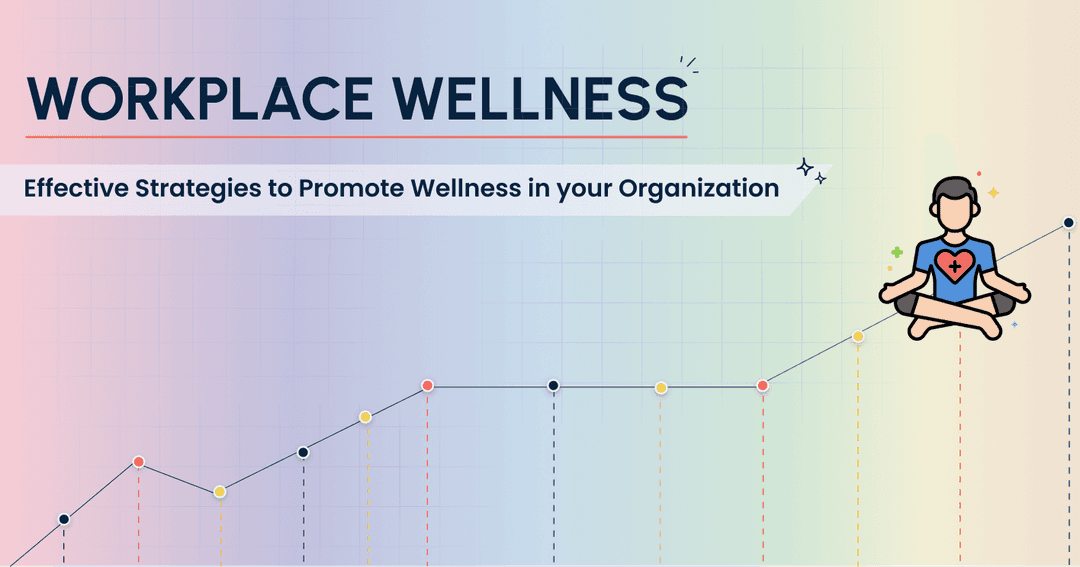
According to a study, an organization whose employee wellness program is effective experiences a 25% reduction in absenteeism, as well as a 41% reduction in healthcare costs. However, more than reducing the cost of healthcare, wellness programs are meant to create an environment that is healthy for workers-physically, mentally, and emotionally.
This article will provide you with in-depth details on how to promote wellness in the workplace, including mental health, financial wellness, work-life balance, and substance abuse prevention strategies. Each section contains actionable ideas that should prove beneficial in helping you execute these strategies.
The significance of employee well-being is much more than a nice-to-have initiative; it's an important success factor toward achieving organisational success. A healthy work force is seen as increasing efficiency and morale while driving better retention. More engaged, motivated, and loyal employees also occur in the case of employees cared for in their well-being.

Organizations that focus on culture of wellness generally see the following outcomes:

A good manager leaves open doors for honest communication. Through regular check-ins, concerns can be heard and addressed, feedback is given, and caring for employee wellness is practised.
Recognition—whether through a simple thank-you, awards, or public acknowledgment—can significantly boost morale. When employees feel appreciated, they are more engaged and less likely to experience burnout.
A good manager respects boundaries and promotes balance by respecting their team and avoiding after-hours communication and ensuring workloads are manageable.
Managers can bridge the gap by making employees aware of available resources, such as mental health support or wellness programs, and encouraging their use.
When managers focus on their own wellness-end—by taking breaks or participating in wellness programs-their employees are encouraged to do the same.
Managers can advocate for initiatives that speak directly to employee pain points, such as flexible work schedules or wellness stipends.
The workplace can be a source of stress, and it often leads to burnout, anxiety, and depression, but an organisation prioritising their mental health can use the place of work as a source of support and strength.
Investing in mental health doesn’t just help employees cope with challenges—it fosters an environment of trust and collaboration. Leaders who take mental health challenges seriously set the tone for open dialogue, destigmatising mental health issues and encouraging employees to seek help when needed.
The National Institute of Mental Health states that untreated mental health issues result in $193 billion in lost earnings annually in the U.S. alone. Employers have a golden opportunity to combat this through thoughtful strategies and resources.

Talent Attraction & Employee Retention
When employees are emotionally supported, they leave less easily. Organizations with strong mental health policies also can recruit the best personnel who have an affinity for inclusive and caring work places.
Improved Employee Relations & Team Dynamics
A sound mental health culture promotes empathy and understanding amongst members of the organization. It reduces risk factors, workplace conflicts and enhances collaboration among employees.
Positive Company Image & Social Responsibility
Advocates of companies based on mental health are viewed as respectable leaders in their ethical practices. They gain stakeholder trust, thereby enhancing ties between themselves and their respective customers, investors, or the general public.
Accessibility for mental health resources should be established by providing EAPs, mental health apps, and confidential hotlines. This can also be done with mindfulness and relaxation platforms like Headspace or Calm to help employees manage stress levels.
Organise training sessions that educate managers to identify the early warning signs of mental distress and make proper responses to the related issues. Equip them with tools to engage in empathetic conversations and guide employees toward professional help.
Introduce yoga classes, mindfulness sessions, or wellness challenges. These reduce stress, but they also build teamwork.
Encourage open discussions about mental health by public campaigns, through leadership promulgations and peer-led discussions. Activities and workshops during Mental Health Awareness Month.
They are one of the most significant causes of work stress-often impacting focus and productivity at the workplace. According to a report by the Employee Benefit Research Institute, 60% of employees say that financial stress impacts their work performance. Such employers build a more resilient and focused workforce.

Reduced Financial Stress
Employees who are given financial tools and resources will feel more in control of their finances, which helps to reduce anxiety and improve mental health overall.
Employee Satisfaction & Loyalty
Organisations that give financial care to employees show that they care. Employees will become more loyal and develop stronger relationships with colleagues in the workplace.
Retirement Readiness
Offering retirement planning resources ensures security for a financially sound retirement. It keeps the focus on the job, not on what is needed for retirement.
Engage financial planners or platforms, like SmartDollar, to walk employees through budgeting, debt reduction, and savings plans.
Provide a qualified employer-matched 401(k) plan or alternate retirement savings program. Educate employees on the value of early starts and contribution optimization.
Provide pre-tax options to manage healthcare and dependent care expenses. Such accounts help employees save money while dealing with necessary spendings.
Cover education expenses as a way of developing employees' skills and career growth. Employees appreciate organizations that provide them with relevant investment in their future.
Set up an employee relief fund to help during unforeseen, unavoidable crises with medical situations or natural disasters.
Provide or offer beneficial partnership with organizations such as GreenPath Financial Wellness to help employees manage and lower their debt.
Employees can only sustain their own job satisfaction and productivity if they are able to achieve a work-life balance. In fact, a recent Deloitte research found that 77% of respondents said they had experienced burnout at work.

Employees with a healthy work-life balance are energised to work more productively during working hours.
Work-life balance is an important factor for happiness. The best outcomes come from increased levels of engagement and lesser absence.
Top performers are attracted to companies that promote work-life balance and respect personal time.
Encourage flexible working arrangements so that employees can attend personal duties while also maintaining a significant level of productivity.
Options include four-day workweeks, which can be used for longer weekends and to recharge.
Get your people to take time off using their PTO, connecting out of the office for a while and coming back refreshed.
Offer lavish parental leave, leave for caring for others, and sick leave policies in place for when life requires time at home.
Provide fitness classes, wellness webinars or on-site health check-ups within the work routine.
Implement policies that discourage work-related communications during vacations, allowing employees to actually have time off.
Clearly define work hours, and encourage staff to maintain a break from work once their shift is over.
Substance abuse is a sensitive matter yet a crucial issue that may affect workplace safety and productivity. Employers can explore prevention strategies such as information dissemination, confidential support services, and clear policies against substance misuse.
Prevention & Treatment Strategies
Regular education in identifying signs of substance abuse.
Employee assistance programs with rehabilitation centres.
Zero-tolerance policy with entry and exit programs for rehab and recovery.

Exploiting Technology for Worksite Wellness
Leverage digital spaces and apps that can offer customised solutions to employees' wellness needs. Employee well-being apps can be used in tracking physical fitness, mental fitness, and encouraging participation in programs.
Engaging Employees
Engage staff in designing workplace wellness programs by soliciting input through surveys and focus groups. Employee engagement is higher in programs that are established with employee preferences.
Monitoring & Developing Wellness Programs
Quarterly review of enrolment metrics, staff sentiment, and program ROI for improvement and expansion of wellness offerings.
Legal and Ethical Guidelines
Worksite wellness programs are an holistic approach and must be designed to comply with privacy laws and labour regulations to ensure the protection of staff information and rights.
Working well is no longer a luxury but an imperative for organisations in the current competitive arena. Through key focus areas of mental health, financial wellness, work-life balance, and substance abuse prevention, HR professionals can create opportunities that support employees' and businesses' growth.
Take the next step to transform your workplace into a well-being and success hub. Book a demo with CompUp today to explore tailored solutions that empower your workforce and drive results.
Community Manager (Marketing)
As a Community Manager, I’m passionate about fostering collaboration and knowledge sharing among professionals in compensation management and total rewards. I develop engaging content that simplifies complex topics, empowering others to excel and aim to drive collective growth through insight and connection.
Revolutionizing Pay Strategies: Don't Miss Our Latest Blogs on Compensation Benchmarking